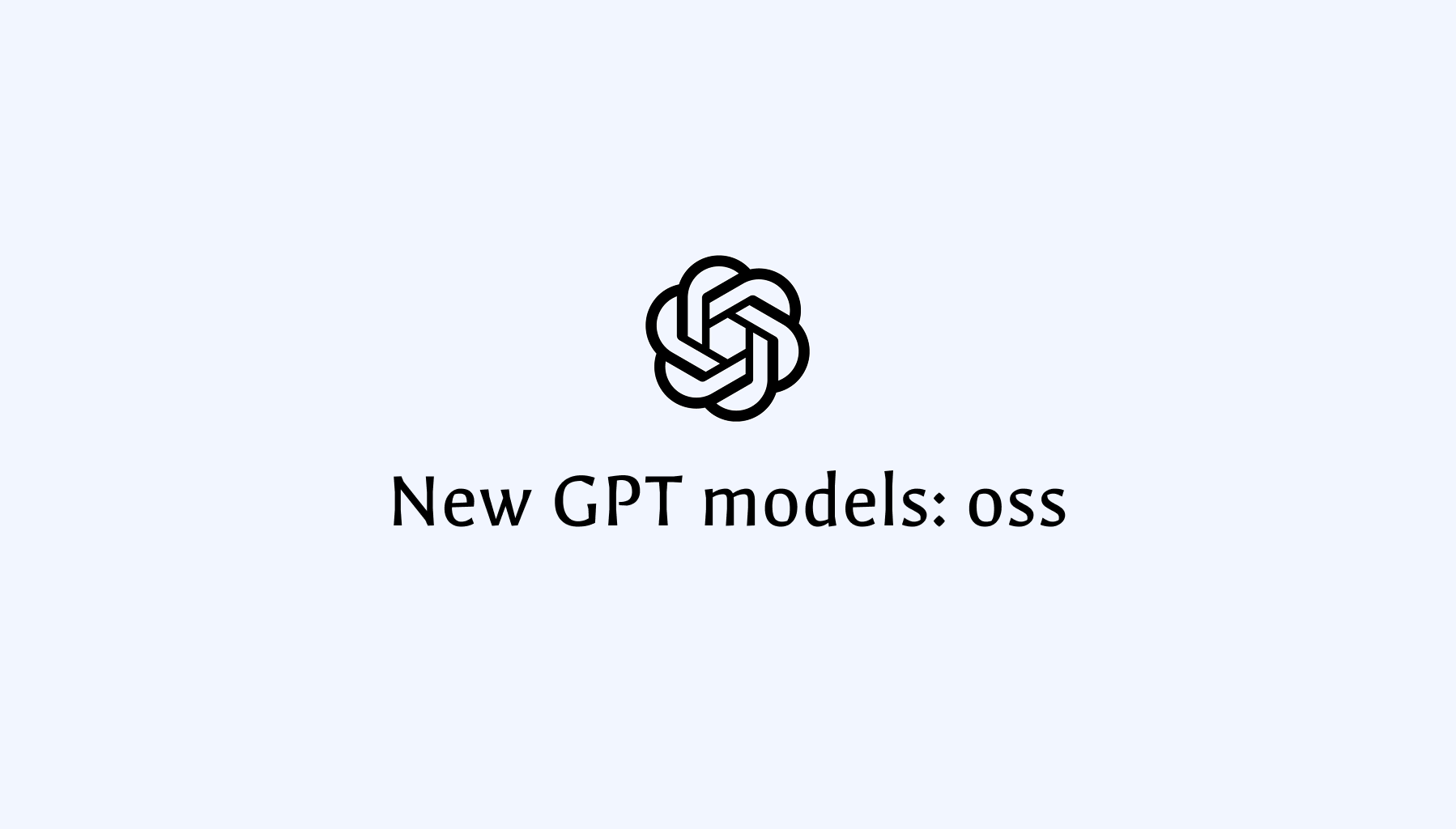What are the two new models like?
- The gpt-oss-120b is the most important open model from OpenAI. It is designed for use in data centers and high-end consumer hardware.
- The gpt-oss-20b is a smaller model that makes it easier for more people to use because it works well on most computers.
Both models are designed to be used locally, but you can also use both of them on Overchat AI.
Both feature the following:
- The Apache 2.0 license, which allows you to build freely without restrictions on how you can use or share the software.
- Configurable reasoning effort — you can easily adjust the level of detail in the reasoning (low, medium, or high).
- Full access to the model's reasoning process, which will make debugging easier.
- Native MXFP4 quantization, which allows the model to be shrunk while still performing well.
In practice, the gpt-oss-120b model can run on a single H100 GPU. The gpt-oss-20b model can run within 16 GB of memory. For example, on a Macbook Pro M1.
Gpt-oss Benchmarks
In benchmark the results are very competitive.
- On MMLU, gpt-oss-120b achieves 90.0%, while gpt-oss-20b reaches 85.3%, compared to OpenAI's proprietary o3 model at 93.4%.
- The GPQA Diamond scores are 80.1% and 71.5%, respectively.
Their math performance is also good: both models get over 96% of the answers right on the AIME 2024 and 2025 tests. This math skill makes the models great for scientific computing and analyzing data.
OpenAI was able to make the models very efficient, which solves one of the main problems with open models: making them easy to run on various levels of hardware.
The company worked with major hardware manufacturers, including Nvidia, AMD, Cerebras, and Groq, to ensure that it would work with different chip designs. This is especially important for business clients who want to use the model in different computer environments, like cloud infrastructure and edge devices.
Where to access gpt-oss-20b and gpt-oss-120b
The best way to see how the basic models react is on Overchat AI. First, create a free account. Then, sign in and choose the model version you want to use. Then, you can chat with OpenAI's new models using a familiar chatbot interface.
You can also find the models in many places, so you can access them quickly.
- Hugging Face and GitHub are the main repositories under the Apache 2.0 licensing terms.
- You can use LM Studio and Ollama to deploy desktop solutions
- Amazon, Baseten, and Microsoft offer cloud hosting solutions.
What are these models good for?
The gpt-oss models are designed for agentic tasks. This means they can use tools and perform complex multi-step reasoning.
Both models can handle:
- Web search integration
- Python code execution
- Function calling
- Structured outputs
- Chain-of-thought processing
The smaller GPT-OS-20B can help you with your laptop. It can search your files, write documents, and help with coding tasks. The larger gpt-oss-120b is better for applications that are more demanding, like data analysis, research, and complex reasoning tasks that need more computational power.
Along those lines, the most common use of the models is probably gong to be when a developer wants to adjust the way that GPT behaves.
For example, you can fine-tune both models using your own data, and unlike API-based solutions (where you have limited customization options) these models give you full control over the parameters.
On top of that, you can also adjust the effort required for the reasoning process.
- Set it to low for quick responses
- medium for balanced performance
- high for complex analytical tasks
Choose the best option for your specific needs and latency requirements.
Bottom Line
After six years of only offering closed, API-based products, OpenAI released two new open-weight models. The gpt-oss-120b and gpt-oss-20b models can run on your hardware and be fully customized for specific tasks. This is OpenAI's response to competition from Meta, Mistral, and other companies that have dominated the open-weight space. The models perform well on tests and can handle complex problems, using tools, and coding tasks.
You can test both models right now on Overchat AI. First, create a free account. Then, select either model from the interface.

